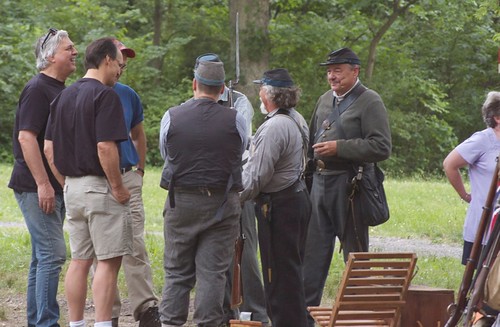
The final post in the Civil War series, and for this week of posts focussed on learnings from the military and military history.
on 19 November, 1863 the Soldier’s National Cemetry was consecrated at Gettysburg, PA. The principle speech was intended to be the Oration by Edward Everett – lasting 2 hours.
Everett was followed by President Abraham Lincoln, who made a very short (2 minute) address. The 272 word Gettysburg Address became one of the most well known, and quoted, speeches in US history.
Brevity is the first lesson! Say what needs to be said in order to adequately convey your message, and no more – especially if you want your words to be remembered.
Crisis and Recovery Plans that are measured by the kilo, or inch, are unlikely to be remembered – nor used.
Lincoln was in Gettysburg to give that address, because of the battle that was fought there 4 months earlier. The battle ran for 3 days (1-3 July 1863) and featured the most casualties of any battle in the war. The 46-51,000 casualties, including about 8,000 dead, meant that the establishment of a large-scale cemetery was a critical activity for local authorities after the battle.
This was the second invasion of the North. The earlier incursion had been stopped at Antietam. For this second invasion the Confederate General, Lee, was not seeking to fight a pitched battle at that time – nor in that location. The Gettysburg battle effectively began by accident as advance parties and skirmishers engaged each other – and the situation progressively escalated as more units arrived and engaged. Eventually Lee was presented with a full scale battle on terrain he had not chosen.
Second lesson – you cannot pick the day, location or the nature of your disruption/disaster. You need to have the capability to respond today, and everyday going forward.
The flip-side of the need to be ready – is to ensure you have an accurate, and balanced, view of your own readiness.
In the context of the Gettysburg campaign, Lee had established an enviable reputation as a General. He had commanded a number of significant victories over several Union Generals. Based on this success he had great confidence in his troops. Sometimes there is a fine line between confidence and over-confidence.
Despite the Union holding some strong, high ground, Lee chose to continue with the engagement. One would assume with the idea that his troops could prevail, based on historic observation. Perhaps he did not give appropriate weight to a couple of factors, that might indicate that history was not a perfect predictor of the future;
- Lee was without his Cavalry Division for much of the battle, and therefore lacked reliable intelligence about Union troop movements.
- This was the first major engagement for the Army Of Northern Virginia since the death of General Thomas Jackson – a superior tactical commander that Lee described as “losing his right arm”.
Sending those 12,500 men across the open field against defensive lines of artillery and infantry (Pickett’s Charge) would surely have to be an act of bravado, in this case an unrealistic expectation of the capability of his troops – and of the odds stacked against them .
Intelligence for resilience, Crisis Management and BC ranges from the capacity to detect and understand ‘weak signals’ through to full scale data gathering and assessment for Crisis/Recovery decision making.
A viable intelligence gathering capability is essential for success in military actions and in Crisis Management situations.
The loss of a critical key leader is also a cause to review your actual capability. Lee was used to communicating his strategic intent and having Jackson implement this intent at the the tactical level. Lesser commanders, and with less experience of direct command form Lee, did not interpret orders in the same way – nor did they make the kind of bold, adaptive moves that Jackson may have employed to achieve success.
Periodic rehearsal, and interchange of sub-ordinates into command roles, is an important activity for Crisis and Recovery Leadership Teams. Rehearsal is the best way to integrate new people into key leadership roles.
Properly done, it will also give you some insight into your own capability.
How do you adapt to changes in the key leadership roles in your Crisis Leadership?
Are you investing adequate resources into your Intelligence function? Especially the capability to detect weak signals?
What are you doing to cull the excess fat from your Action Plans?
Leave a Reply